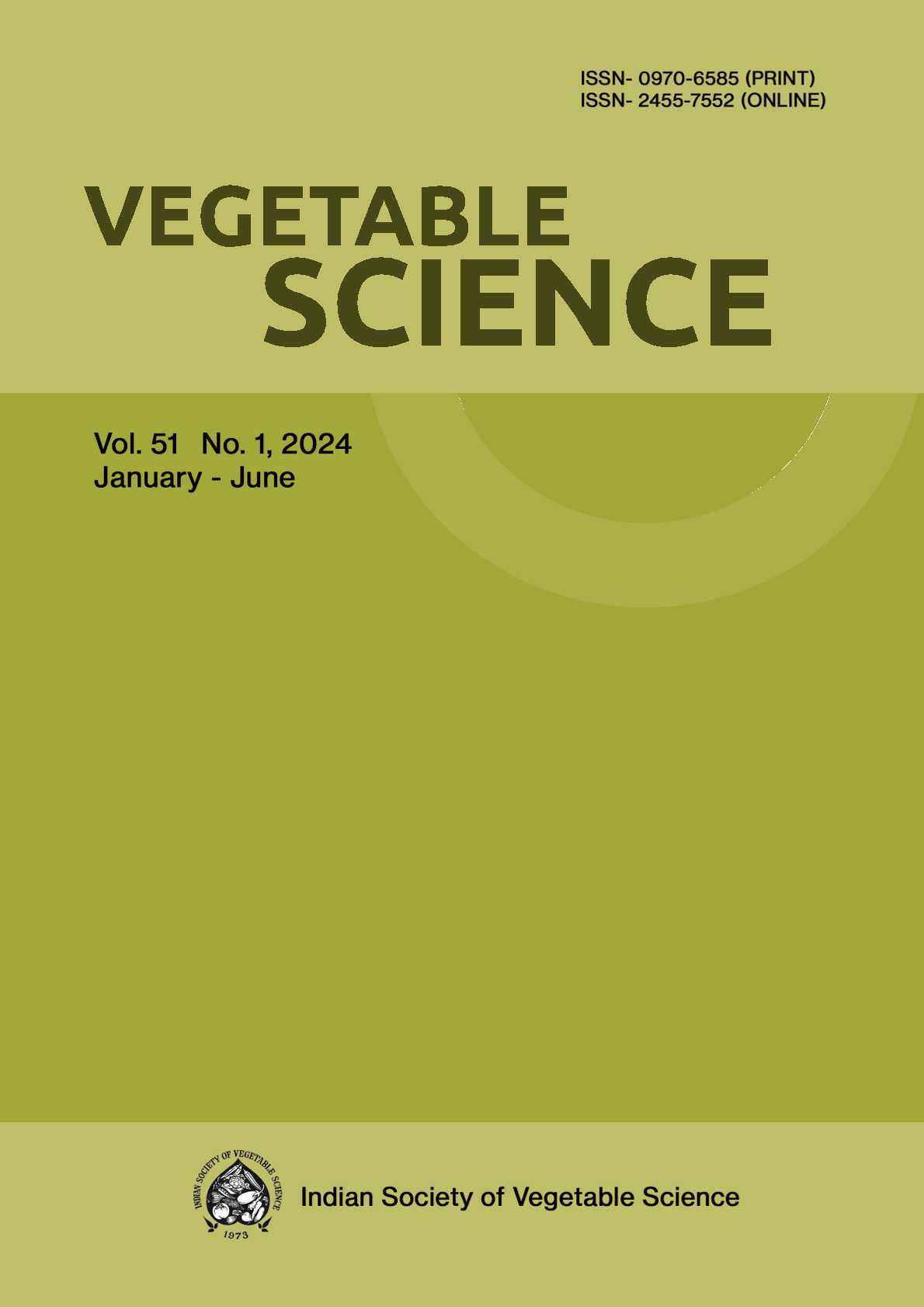Advances in pea breeding and genomics: From traditional techniques to modern approaches
DOI:
https://doi.org/10.61180/vegsci.2023.v50.i1.01Keywords:
Pisum, breeding, genomics, marker-assisted selection, biotic, abiotic, stresses.Abstract
Peas, a highly valued annual legume vegetable with a rich history of domestication, are grown globally as a valuable exportoriented cash crop. Despite an increase in cultivation area and production, there has been only a slight improvement in green pea productivity, from 7.7 to 7.8 t/ha, over the last two decades. The primary focus for genetic improvement in peas is developing resistance to various biotic stressors, including diseases such as powdery mildew, downy mildew, rust, wilt, viral infections, and bacterial blight, as well as pests like leaf miners, aphids, pod borers, and pea stem flies. Traditional reeding approaches have played a significant role in the genetic improvement of peas, resulting in the development of veral cultivars in various segments; however, advanced breeding techniques such as marker-assisted selection, genomic selection, and genome editing hold great promise in enhancing genetic improvement by facilitating the identification and selection of desirable traits, such as resistance to biotic and abiotic stressors, improved yield, and increased nutrient content, through the introduction of precise genetic modifications. By targeting specific genomic regions associated with desired traits, these techniques can increase the efficiency and precision of breeding programs, ultimately leading to the development of more resilient and productive pea varieties.






